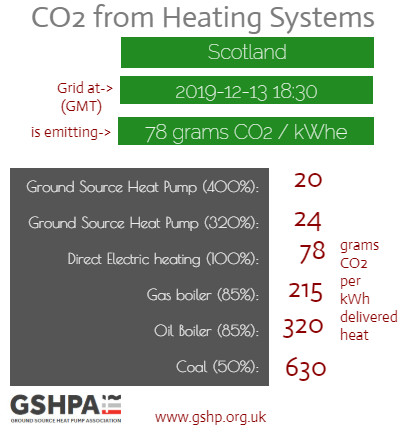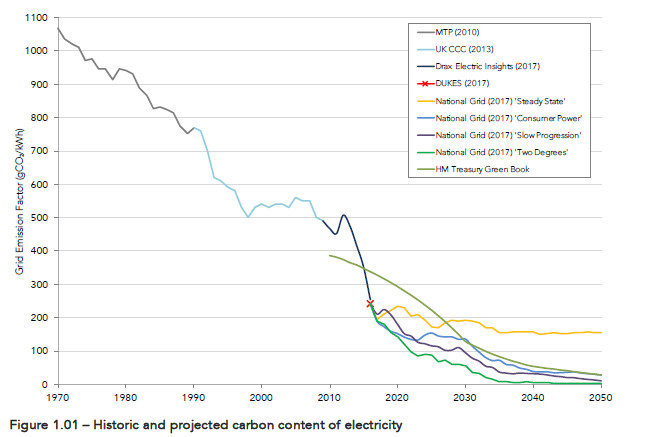GLA's Energy Assessment Guidance 2018
The GLA has issued a revised Energy Assessment Guidance: this is to be used on preparing energy assessments as part of stategic planning applications (including developments of over 150 residential units, developments over 30 metres in height, developments on the Green Belt and on Metropolitan Open Land).
Applicants are encouraged to use the updated SAP 10 carbon emission factor of 233 grams of CO2/kWh in place of the very outdated factor from SAP 2012 of 519 grams of CO2/kWh.
Any applicants proposing to use the outdated SAP 2012 carbon emissions factors will need to provide a justification. If gas-engine CHP is also proposed, applicants will be expected to provide sufficient information to justify its use and to minimise the carbon and air quality impacts.
This approach of the GLA will be in place for London from January 2019 until the Government adopts new Building Regulations with updated carbon emission factors. It seems likely that many of the UK's Local Planning Authorities may now follow the lead of the GLA.
See a full copy of the Mayor of London's Energy Assessment Guidance.
If short on time, see these quotes from the Introduction:
- The energy assessment must fully comply with Policies 5.2 to 5.9 inclusive and, recognising the integrated nature of London Plan policies, take account of relevant design, spatial, air quality, transport and climate change adaptation policies in the London Plan.
- The energy assessment must clearly outline the applicant's commitments in terms of CO2 savings and measures proposed to reduce energy demand. It is also important to consider and mitigate any potential air quality impacts arising as a result of the technologies proposed.
- Grid electricity has significantly decarbonised since the last update of Part L in April 2014, and in July 2018 the Government published updated carbon emission factors (SAP 10) demonstrating this. These new emission factors will however not be incorporated into Part L of the Building Regulations until the Government has consulted on new Building Regulations. The impact of these new emission factors is significant in that technologies generating on-site electricity (such as gas-engine CHP and solar PV) will not achieve the carbon savings they have to date. It is therefore anticipated that developments will need to utilise alternative or additional technologies to meet the 35% on-site carbon reduction target, including using zero emission or local secondary heat sources.
See a full copy of SAP 10.0, published in July 2018, which shows a grid carbon factor of 233 grams of CO2/kWh.
See a full copy of SAP 10.1, published in Oct 2019, which shows a grid carbon factor of 136 grams of CO2/kWh.
CO2 Emissions Calculator
The GSHPA's Carbon Emissions Calculator shows the current level of CO2 being issued in grams for each kWh of heat delivered by the most common forms of heating, on the assumption that the heat pumps are using electricity from the Grid.
The amount of CO2 emitted by a gas boiler is constant at 215 grams of CO2 per kWh of heat delivered (assuming the boiler is 85% efficient). Gas issues far less CO2 than burning oil, which in turn emits much less than burning coal.
However, the very clear winner is to use a heat pump which issues no CO2 at all if it uses green electricity. Even if the heat pump uses grid electricity only a small fraction of the CO2 issued by a gas boiler will be issued by the Grid when supplying an efficient heat pump.
The GridWatch app shows the current amount. This has fallen rapidly from the amount that would have been issued in 2012 as the grid has been decarbonising rapidly. The historic and projected CO2 emissions are shown on the graph below.
The message is very clear: if we want to reduce carbon emissions from heating we can do so now by using heat pumps.
Air quality is also a key driver
A significant benefit of heat pumps over conventional gas boilers is that there is no combustion involved (combustion of gas emits nitrous oxides). Beside the direct advantages (safety), technical advantages (no need for flues) this is very beneficial for cities like London with poor levels of air quality.
Alternative forms of low carbon heating
Alternative forms of low carbon heating have also been considered including direct electric heating, which has a significantly higher running cost; and the burning of hydrogen which emits no CO2 at the point of combustion.
However, upgrading the gas grid to contain very small hydrogen molecules would incur a huge national cost and upgrading all the boilers to burn hydrogen would also be a significant task. Production of hydrogen by steam reformation emits large volumes of CO2 which would require the development of economic Carbon Capture and Storage to achieve carbon neutrality.
Hydrogen can also be derived from electrolysis powered by renewable electricity, although the overall efficiency would be less than 70% before accounting for distribution losses, compared to an efficiency of well over 300% for a typical ground source heat pump.
It is clear that the only practical route to heating without CO2 emissions is to avoid combustion. The alternative is to use heat transfer: which means using heat pumps. There is no need to search for esoteric alternatives when tried-and-tested heat pumps are available now.
See Renewable Heating See Renewable Cooling



